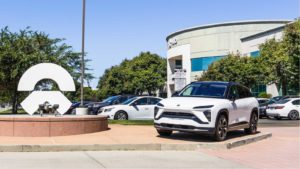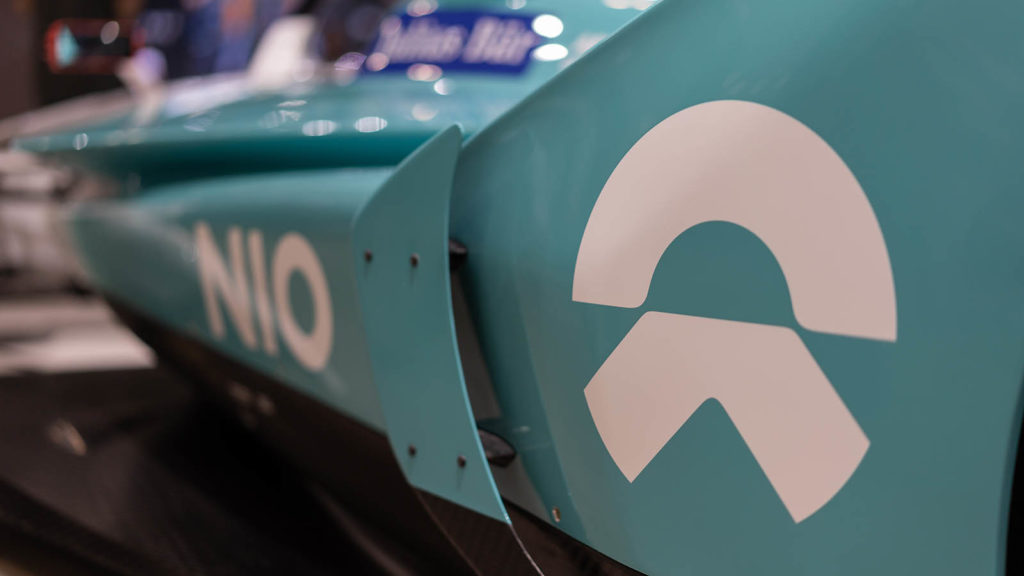While Tesla (NASDAQ:TSLA) has a big lead in China’s electric vehicle market, the government there is determined to make it a short-lived one. To that end it has gone all-in on Nio (NYSE:NIO), originally a “Chinese Tesla” launched by a Chinese Musk named William Li. Meanwhile, shares of Nio stock have climbed.

I wrote almost two years ago about Nio’s connections to Tencent Holdings (OTCMKTS:TCEHY), one of China’s “cloud emperors.” More recently I described it’s new arrangements with the government of Hefei, the center of China’s electric car efforts.
Spurred by rising deliveries, investors have bought the Chinese put. Since I last wrote about it in August shares have more than doubled in price.
What China Is Doing
China saw the electric car revolution coming from a long way off. Spurred by pollution that compares with that of 19th century London, the government has built huge solar and wind farms. Rising demand means it has made limited headway, still depending to a great extent on brown coal for power. Most Chinese production remains state-owned and they offer dozens of electric car brands.
None has captured the imagination of Tesla, which now has a Shanghai Gigafactory pumping out thousands of electrics each month, and a deal with Chinese battery firm CATL. CATL has a “cell to pack” technology that is supposed to reduce cost and increase range. Tesla, however, says it’s now bringing battery production in-house, with a new tabless design, but for now it’s still buying lots of CATL batteries.
In short, China is engaged in “coopetition” with Tesla, and Nio is the high-end play. While Li acts as the front man, what’s behind the door is government finance and government ambition.
What Nio Is Doing
China has 15 different electric vehicle makers, most of which make utilitarian vans and sedans. In that market, you can think of Nio as a Ferrari (NASDAQ:RACE). The country had 91 domestic car brands in 2019. Nio was number 62 in sales.
Li is telling investors Nio can scale quickly, from 60,000 deliveries this year to 150,000 in 2021. This has caused upgrades from analysts like those at JPMorgan Chase (NYSE:JPM) to keep the rally going.
But look at the numbers. In the first half of 2020 Nio lost about $400 million on sales of about $725 million. It is next due to report on Nov. 10, with analysts expecting sales of $629 million, and a loss of 17 cents per share, or $180 million. Nio’s state backers had taken the cash balance to nearly $1.6 billion at the end of June, but the runway isn’t eternal.
By pumping up Nio stock, raising its market cap to $8 billion, that runway is extended. But to keep that market cap high, Nio must keep growing fast. Unlike Tesla, which offered a unique product in a hungry market, Nio faces a very crowded market. It depends for its success on China’s millennials born between 1980 and 2000 under the country’s one child policy. They’re as spoiled as any baby boomer. Nio advertises directly to them with special Nio Houses and clubs to feed their egos.
The Bottom Line on NIO Stock
The Nio is a high-end car with a high-end audience whose size is limited. Nio is one of many electric car companies going through a vogue, through the mistaken impression that they have the road to themselves.
For Nio to compete outside China it must beat Tesla, which is scaled to offer the same vehicles at much lower cost.
Nio is also government controlled. If you believe China’s government has the best interests of American investors at heart, feel free to invest in Nio at these levels. I’ll pass.
On the date of publication, Dana Blankenhorn did not have (either directly or indirectly) any positions in any of the securities mentioned in this article.
Dana Blankenhorn has been a financial and technology journalist since 1978. He is the author of the environmental thriller Bridget O’Flynn and the Bear, available at the Amazon Kindle store. Write him at [email protected] or follow him on Twitter at @danablankenhorn.
